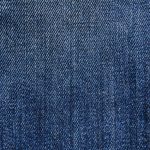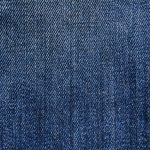You rely on neoprene scuba fabric because it’s a synthetic rubber made from chloroprene, offering excellent insulation and flexibility. Its unique structure traps tiny nitrogen bubbles, keeping you warm by minimizing heat loss and blocking cold water. Neoprene wetsuits stretch comfortably, resist abrasion, and last well with proper care. While it’s great for diving, neoprene does have environmental impacts, but innovations are improving sustainability. Keep exploring to understand why neoprene remains the top choice for divers.
Table of Contents
Key Takeaways
- Neoprene scuba fabric is a synthetic rubber made by polymerizing chloroprene, providing elasticity, durability, and resistance to heat and chemicals.
- It contains tiny nitrogen gas bubbles that offer excellent thermal insulation by minimizing heat transfer and preventing cold water entry.
- The fabric is flexible and stretches to fit the body snugly, enhancing comfort and reducing water flushing during dives.
- Neoprene’s closed-cell structure blocks water penetration while remaining durable against abrasions, saltwater, UV exposure, and chemicals.
- It is the primary material for wetsuits, offering a balance of insulation, flexibility, and protection compared to other fabrics like Lycra or Kevlar.
The Chemical Composition of Neoprene
Although you mightn’t realize it, neoprene’s unique properties come from its chemical makeup. It’s a synthetic rubber formed by polymerizing chloroprene, a compound containing chlorine, carbon, and hydrogen atoms.
This polymerization creates long chains of polychloroprene, giving neoprene its elasticity and durability. The chlorine in the structure enhances resistance to heat, oils, and chemicals, which makes neoprene highly versatile.
Polychloroprene chains provide neoprene with elasticity and durability, while chlorine boosts its resistance to heat and chemicals.
When you wear neoprene scuba fabric, you benefit from its insulating qualities because the material traps tiny gas bubbles within its matrix, reducing heat loss.
Its chemical structure also provides flexibility and resilience, so it stretches comfortably without losing shape.
Understanding this composition helps you appreciate why neoprene works so well in demanding water environments, keeping you warm and protected.
How Neoprene Is Manufactured
When you look at neoprene production, it all starts with selecting high-quality raw materials that guarantee durability and flexibility.
You’ll then see how the foaming process creates its signature lightweight, spongy texture.
Finally, the curing process locks in the material’s shape and strength, making it perfect for scuba gear.
Raw Material Selection
Since the quality of neoprene fabric depends heavily on its base materials, selecting the right raw materials is crucial. You start with chloroprene rubber, the primary polymer that gives neoprene its flexibility and durability. Next, you choose additives like stabilizers and fillers to enhance properties such as UV resistance and elasticity. Finally, solvents and catalysts are selected to control the polymerization process and guarantee consistent quality.
| Raw Material | Purpose |
|---|---|
| Chloroprene Rubber | Base polymer for flexibility |
| Additives | Improve durability and stability |
| Solvents & Catalysts | Control polymerization process |
Foaming and Curing Process
Before you can shape neoprene into scuba fabric, you need to transform the raw materials through foaming and curing.
First, you mix liquid polychloroprene with a blowing agent that releases gas when heated. This creates tiny gas bubbles, turning the liquid into a foam with a closed-cell structure, which traps air and provides insulation.
Next, you cure the foam by heating it under controlled conditions to solidify its shape and improve durability. This curing process cross-links the polymer chains, enhancing neoprene’s elasticity and resistance to chemicals and heat.
Once cured, the foam becomes stable and flexible, ready to be laminated with fabric layers to form scuba material. This precise foaming and curing stage guarantees neoprene’s performance underwater.
Thermal Insulation Properties of Neoprene
Although neoprene looks simple, it provides excellent thermal insulation that keeps you warm underwater. This is because neoprene traps tiny nitrogen gas bubbles within its structure, reducing heat loss. When you wear a neoprene wetsuit, these gas bubbles act as barriers against cold water, maintaining your body temperature.
Here’s a quick comparison of neoprene’s insulation properties:
| Property | Description | Benefit to You |
|---|---|---|
| Gas Bubbles | Nitrogen-filled pockets | Minimizes heat transfer |
| Thickness | Varies from 2mm to 7mm | Adjusts warmth level |
| Water Resistance | Low permeability | Prevents cold water entry |
Understanding these factors helps you pick the right neoprene suit to stay warm during your dive.
Flexibility and Comfort in Scuba Diving
When you dive, your wetsuit needs to move with you, not restrict you. Neoprene’s flexibility allows the suit to stretch and bend as you swim, making your movements smooth and natural.
This flexibility comes from the tiny air cells trapped inside neoprene, which compress and expand without losing shape. Because of this, you won’t feel stiff or constrained underwater.
Comfort also comes from neoprene’s ability to conform to your body shape, creating a snug yet gentle fit that prevents water from flushing in.
Neoprene molds to your body for a snug, gentle fit that keeps water out.
Plus, modern neoprene suits often have added stretchy panels in key areas, enhancing mobility even more.
With neoprene, you get a balance of support and freedom, letting you focus on exploring rather than adjusting your gear constantly.
Water Resistance and Durability Features
You’ll appreciate how neoprene’s waterproof properties keep you dry and insulated underwater.
Its durability guarantees your gear withstands repeated use and harsh conditions without wearing out quickly.
Let’s explore how these features make neoprene a reliable choice for scuba fabric.
Waterproof Properties
Because neoprene scuba fabric forms a tight, flexible barrier, it keeps water out while allowing you to move freely underwater. This waterproof quality is essential for maintaining your body heat and comfort during dives. The closed-cell structure traps tiny gas bubbles, preventing water from seeping through. Plus, its durable surface resists abrasions and punctures, ensuring reliable protection. Here’s a quick look at the waterproof features that make neoprene ideal for diving:
| Feature | Benefit |
|---|---|
| Closed-cell structure | Blocks water penetration |
| Flexibility | Enables unrestricted movement |
| Gas bubbles | Provides insulation |
| Abrasion resistance | Maintains fabric integrity |
| Puncture resistance | Enhances durability |
With these properties, neoprene keeps you dry, warm, and protected underwater.
Longevity and Wear Resistance
Neoprene scuba fabric stands out for its impressive longevity and wear resistance, making it a reliable choice for frequent divers.
You’ll find that its closed-cell structure resists degradation from saltwater, UV exposure, and chemicals, so it maintains its integrity over time.
When you care for your neoprene gear properly—rinsing it with fresh water after each dive and storing it away from direct sunlight—you can extend its lifespan greatly.
The fabric’s flexibility also helps it resist tearing and abrasion, even in rugged underwater environments.
This durability means you won’t need to replace your wetsuit or accessories as often, saving you money and hassle.
Different Thicknesses and Their Uses
When choosing scuba fabric, understanding different thicknesses helps you select the right material for your diving conditions.
Thinner neoprene, around 2-3mm, suits warm water diving, offering flexibility and comfort without overheating. For moderate temperatures, 5mm thickness strikes a balance between insulation and mobility.
In colder waters, 7mm or thicker neoprene provides better thermal protection, keeping you warm during longer dives. Remember, thicker neoprene can reduce flexibility, so consider your need for movement.
Some wetsuits combine layers of varying thicknesses to optimize comfort and insulation in different body areas. By choosing the appropriate neoprene thickness, you guarantee safety, comfort, and performance tailored to your dive environment.
This knowledge helps you dive confidently, no matter the water temperature.
Comparing Neoprene With Other Diving Fabrics
Understanding neoprene’s thickness options gives you a solid foundation, but it’s also important to see how this material stacks up against other fabrics used in underwater gear.
Unlike neoprene, materials like Lycra or spandex offer better flexibility and comfort but lack insulation, making them ideal for warm-water diving.
Kevlar or Cordura, on the other hand, provide superior durability and abrasion resistance but don’t insulate well, so you might use them for protective layers rather than thermal protection.
Neoprene strikes a balance by offering both insulation and moderate flexibility, which is why it’s the go-to for wetsuits.
Neoprene offers the perfect balance of insulation and flexibility, making it ideal for wetsuits.
When choosing your dive gear, consider how neoprene’s thermal properties compare to these fabrics’ strengths, ensuring you get the right mix of warmth, protection, and mobility for your diving conditions.
Environmental Impact and Sustainability
You should know that producing neoprene emits significant greenhouse gases and uses non-renewable resources.
Its resistance to breaking down means it poses challenges for biodegradability and waste management.
Luckily, there are sustainable alternatives emerging that aim to reduce environmental impact without compromising performance.
Production Emissions Overview
Although neoprene scuba fabric offers excellent performance in water sports, its production emits significant greenhouse gases and pollutants that impact the environment.
When you consider the manufacturing process, here are the main emission sources you’ll find:
- Raw material extraction – Harvesting petroleum-based chemicals releases CO2 and other pollutants.
- Chemical synthesis – Producing neoprene involves energy-intensive reactions that emit greenhouse gases.
- Foaming process – Creating the foam structure releases volatile organic compounds (VOCs).
- Finishing and treatment – Additional chemicals used for flexibility and durability generate waste emissions.
Biodegradability Challenges
The environmental toll from neoprene production doesn’t stop at emissions; its resistance to biodegradation poses ongoing sustainability challenges. When you dispose of neoprene, it can linger in landfills for decades, resisting natural breakdown processes. This persistence contributes to long-term waste buildup and environmental harm. Understanding neoprene’s durability helps you grasp why managing its lifecycle is essential.
| Factor | Impact on Environment | Your Role in Mitigation |
|---|---|---|
| Non-biodegradable | Accumulates in landfills | Reduce unnecessary use |
| Chemical additives | Slow degradation process | Support recycling initiatives |
| Long decomposition | Harmful microplastic release | Choose products wisely |
| Waste volume | Increases pollution | Promote responsible disposal |
Sustainable Alternatives Exploration
While neoprene’s durability challenges sustainability, exploring eco-friendly alternatives opens new paths for reducing environmental impact.
You can opt for sustainable scuba fabrics that maintain performance without compromising the planet. Here are some options to evaluate:
- Limestone-Based Neoprene: Uses limestone instead of petroleum, cutting carbon emissions markedly.
- Yulex Natural Rubber: Derived from rubber trees, it’s biodegradable and renewable.
- Recycled Neoprene: Made from reclaimed neoprene scraps, reducing waste and resource use.
- Plant-Based Blends: Incorporate materials like organic cotton or hemp, minimizing synthetic inputs.
Care and Maintenance of Neoprene Wetsuits
Taking good care of your neoprene wetsuit guarantees it stays flexible, durable, and effective in keeping you warm underwater.
After each dive, rinse your wetsuit thoroughly with fresh water to remove salt, sand, and chlorine, which can degrade the material.
Hang it to dry inside out, away from direct sunlight and heat sources, to prevent fading and cracking.
Avoid using harsh detergents or bleach; instead, use mild soap or specialized wetsuit cleaner when necessary.
Store your wetsuit flat or on a wide hanger to maintain its shape and prevent creases.
Regularly check seams and zippers for damage and repair small tears promptly.
Innovations and Advances in Neoprene Technology
Countless innovations in neoprene technology have transformed scuba diving gear, making wetsuits lighter, more flexible, and better at insulating.
When you choose modern neoprene, you benefit from:
- Nano-foam structures that trap more air, boosting thermal insulation without adding bulk.
- Superstretch fabrics that give you greater mobility, so you can move freely underwater.
- Hydrophobic coatings that repel water, reducing water absorption and drying time.
- Environmentally friendly blends that use limestone-based neoprene, cutting down on toxic chemicals.
These advances mean your wetsuit feels more comfortable and performs better, keeping you warmer and more agile during your dives.
Experience enhanced comfort and performance, staying warmer and more agile with advanced neoprene technology.
You’ll notice the difference the moment you slip into your upgraded neoprene gear.
Frequently Asked Questions
Can Neoprene Scuba Fabric Cause Allergic Reactions?
You might experience allergic reactions to neoprene scuba fabric if you’re sensitive to its chemicals or latex additives. Always test a small skin area first, and if irritation occurs, switch to hypoallergenic alternatives to avoid discomfort.
How Long Does a Neoprene Wetsuit Typically Last?
You can expect your neoprene wetsuit to last about 3 to 5 years with regular use. Proper care, like rinsing after dives and avoiding sunlight, helps extend its durability and keeps it performing well.
Is Neoprene Scuba Fabric Safe for Children?
You can safely use neoprene scuba fabric for children, as it’s flexible, durable, and provides insulation. Just guarantee proper fit and thickness for comfort and protection. Avoid prolonged exposure to UV and chemicals to keep it safe.
Can Neoprene Wetsuits Be Repaired if Torn?
About 80% of torn neoprene wetsuits can be repaired effectively. You can patch small tears yourself using neoprene cement or take it to a professional for larger rips, extending your wetsuit’s life considerably.
What Colors and Patterns Are Available for Neoprene Wetsuits?
You’ll find neoprene wetsuits in a range of colors like black, blue, and camo patterns. Many brands offer vibrant designs, so you can choose something classic or bold to match your style and stand out underwater.
- Tetron Fabric for Marine Applications: Durability and Use Cases - June 18, 2025
- Tetron Fabric for Outdoor Furniture: Weather Resistance and Care - June 18, 2025
- Tetron Fabric for Wall Coverings: Style and Application Tips - June 18, 2025







